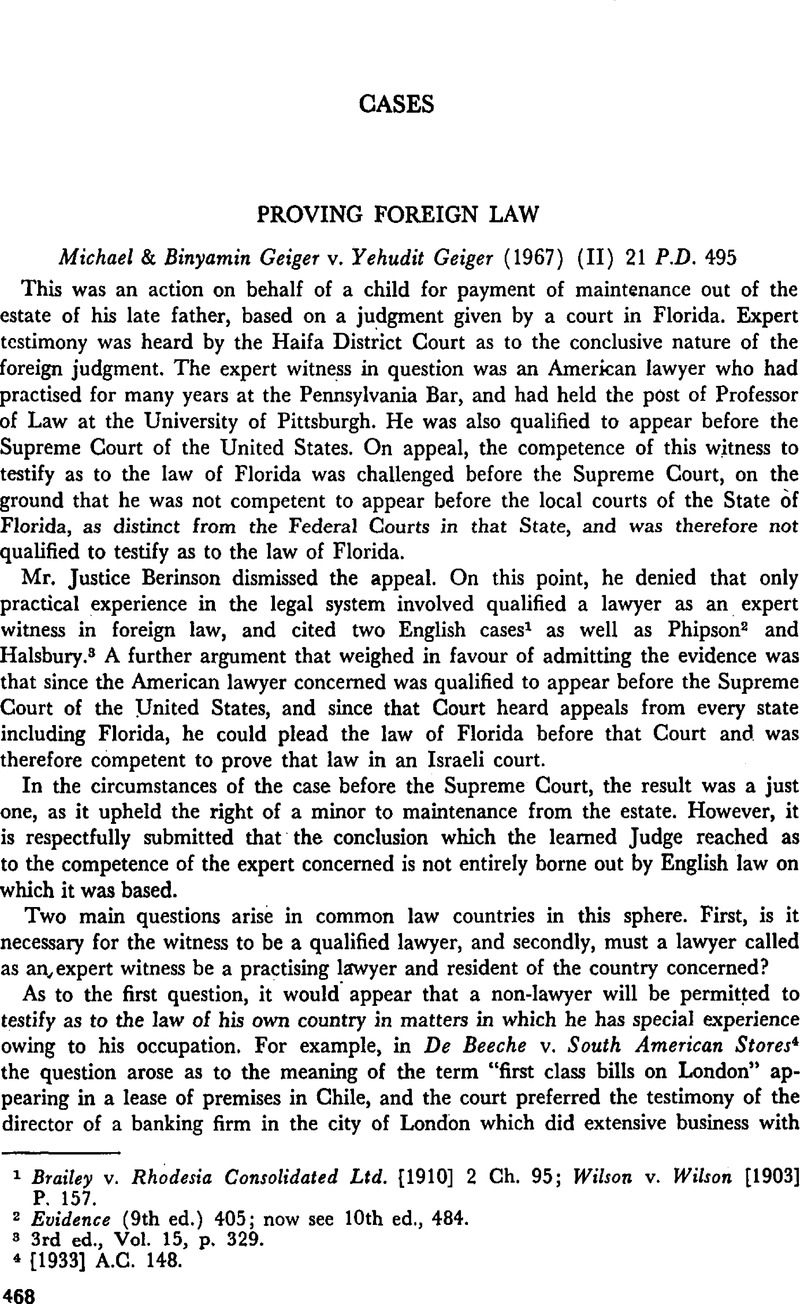No CrossRef data available.
Published online by Cambridge University Press: 12 February 2016

1 Brailey v. Rhodesia Consolidated Ltd. [1910] 2 Ch. 95; Wilson v. Wilson [1903] P. 157.
2 Evidence (9th ed.) 405; now see 10th ed., 484.
3 3rd ed., Vol. 15, p. 329.
4 [1933] A.C. 148.
5 Vander Donckt v. Thellusson (1849) 8 C. B. 812 at 824.
6 Said Ajami v. Comptroller of Customs [1954] 1 W.L.R. 1405.
7 Private International Law (2nd ed., 1950) 220, note 4.
8 Private International Law (7th ed., 1965) 116.
9 Dicey, & Morris, , The Conflict of Laws (8th ed., 1967) 1114.Google Scholar
10 (1850) 5 Exch. 275.
11 At p. 276.
12 Re Duke of Wellington [1947] Ch. 506, at 514.
13 Brailey v. Rhodesia Consolidated [1910] 2 Ch. 95.
14 [1903] P. 157.
15 (1878) 26 W.R. 684.
16 [1918] P. 140.
17 Dicey & Morris, op. cit. 1113.
18 Op. cit. 116.
19 Conflict of Laws (2nd ed., 1954) 834.
20 Wigmore on Evidence, § 564.
21 “The Problem of Proving Foreign Law” (1941) 50 Yale L.J. 1018, 1028.
22 At least one American decided case shows, however, a less flexible approach. In Ussatore v. The Victoria (1949) 172 F. 2d. 434, the evidence of an American lawyer, who was a member of the Cuban and Puerto Rican Bars, on Argentinian law, which he had studied and digested for an American legal encyclopedia, while not rejected outright, was accorded little weight, the court expressing a clear preference for practical experience.
23 which are known in France as “certificats de coutume”: see Batiffol, , Traité Elémentaire de Droit International Privé (4th ed., 1967) 375.Google Scholar
24 “Proving the Law of Foreign Countries” (1954)· 3 Am. J. Comp. L. 60.
25 Conflict of Laws, 1962, p. 365, n. 19.
26 (1963) (II) 17 P.D. 904, at 909.